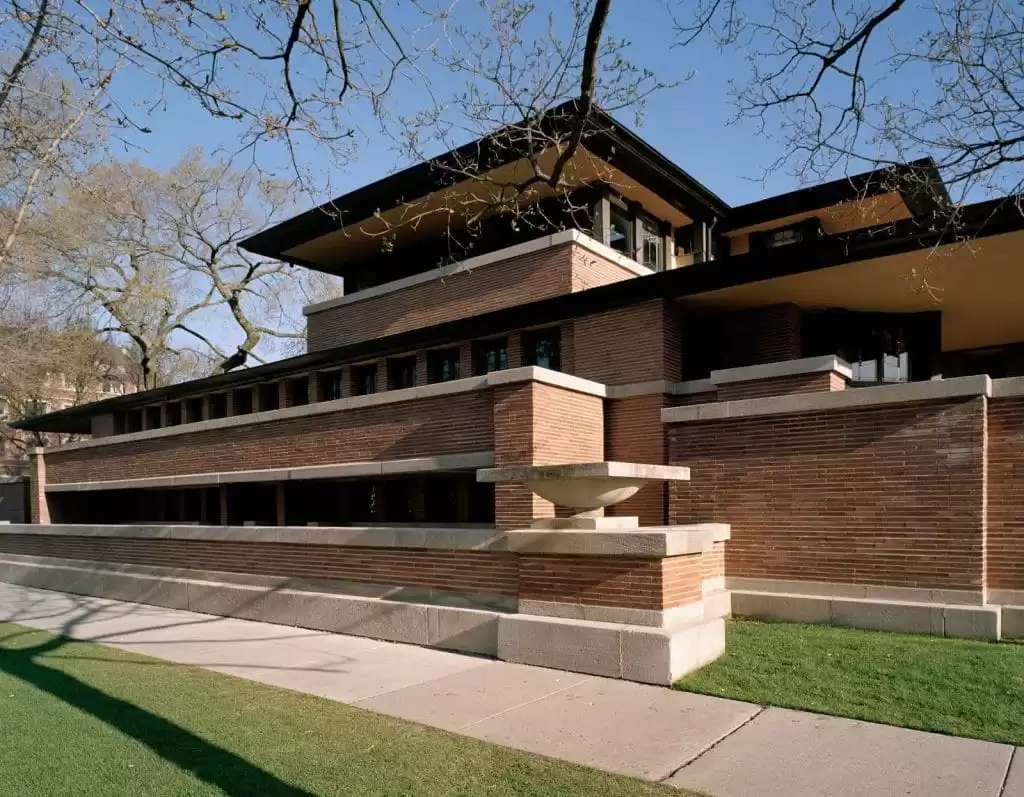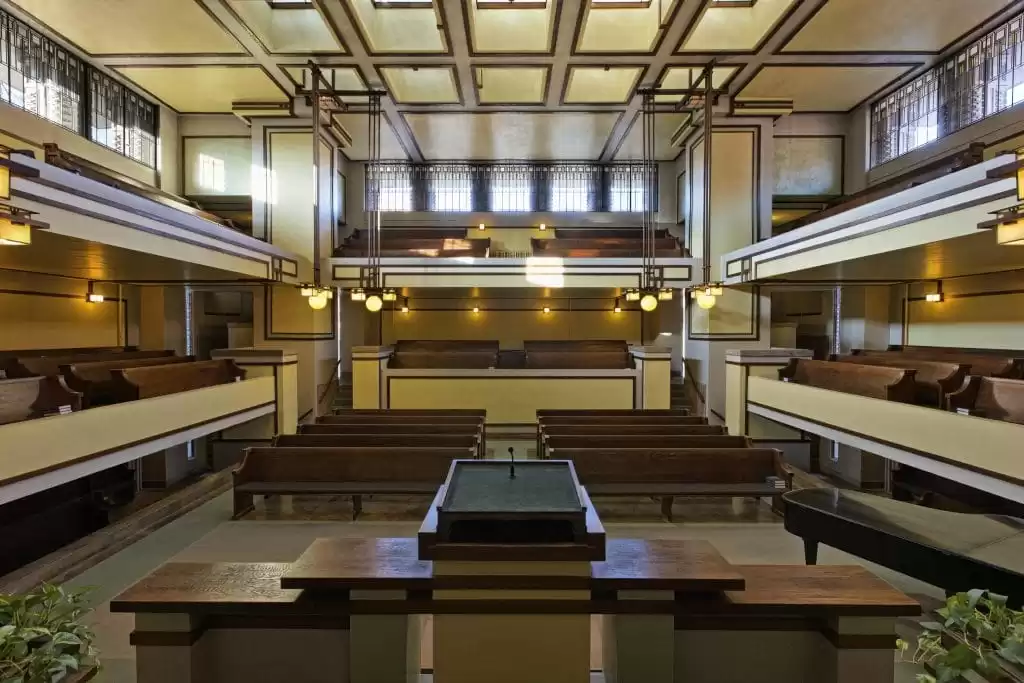Frank Lloyd Wright Architecture Added to UNESCO’s World Heritage List
Supporters of the Frederick C. Robie House and Unity Temple can rejoice – the two beloved masterpieces designed by Frank Lloyd Wright are included in a group of eight Frank Lloyd Wright structures that have been inscribed onto UNESCO’s World Heritage List. The group named “The 20th century Architecture of Frank Lloyd Wright” will be the 24th addition from the United States to the World Heritage List: other American entries include Yellowstone National Park, the Statue of Liberty, and Philadelphia’s Independence Hall. The World Heritage List includes wonders from around the world, such as Australia’s Great Barrier Reef, China’s The Great Wall, France’s Cathedral of Notre-Dame, India’s Taj Mahal and others.
UNESCO, or the United Nations Educational, Scientific, and Cultural Organization, seeks to build peace through international cooperation in Education, the Sciences and Culture, and is in charge of designating sites to the World Heritage List. Once a site is added to the World Heritage List, according to the joint UNESCO and the World Heritage Committee website, “the resulting prestige often helps raise awareness among citizens and governments for heritage preservation. The site’s country of origin may also receive financial assistance and expert advice from the World Heritage Committee to support activities for the preservation of its sites.”

The Frederick C. Robie House, designed in 1908, located in Chicago, IL. Photo: Nick Abele.
“The 20th century Architecture of Frank Lloyd Wright” consists of eight buildings in the United States designed by Frank Lloyd Wright during the first half of the 20th century. In addition to the Robie House and Unity Temple, others in the group include the Fallingwater (Mill Run, Pennsylvania), the Herbert and Katherine Jacobs House (Madison, Wisconsin) and the Guggenheim Museum (New York). According to UNESCO’s press release, “these buildings reflect the ‘organic architecture’ developed by Wright, which includes an open plan, a blurring of the boundaries between exterior and interior and the unprecedented use of materials such as steel and concrete. Each of these buildings offers innovative solutions to the needs for housing, worship, work or leisure.“

Graphic courtesy of the Frank Lloyd Wright Building Conservancy
Designed in the first decade of the 20th century in Wright’s Oak Park Studio, the two houses are landmark buildings and representative of Wright’s Prairie style. The Frederick C. Robie House, located in Chicago’s Hyde Park on the campus of University of Chicago, is the ultimate expression of the Prairie style, unrelentingly horizontal in form and incorporating an interior open plan that would influence modern architectural design for the next century. The Unity Temple, strikingly geometric in form, was Wright’s first public building to feature exposed concrete, announcing a new era of modern innovation.

The Unity Temple, located in Oak Park, IL.
The UNESCO inscription coincides with the Trust’s announcement of a new Frank Lloyd Wright Visitor and Education Center that will deepen its educational impact on local residents as well as over 150,000 visitors from around the world to the Trust’s five Wright sites annually. “This UNESCO designation firmly establishes Wright’s place on the international stage of modern architecture,” says Trust President & CEO Celeste Adams. “We look forward to sharing his great cultural heritage in the Chicago area with a growing international audience.”
